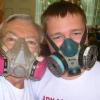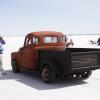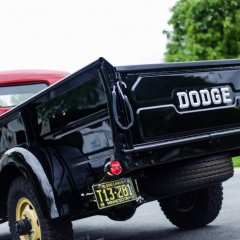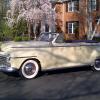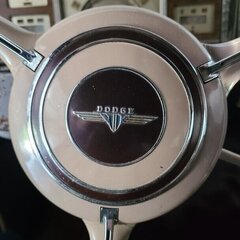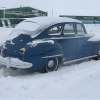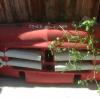-
Posts
33,916 -
Joined
-
Last visited
-
Days Won
479
Plymouthy Adams last won the day on April 22
Plymouthy Adams had the most liked content!
Reputation
5,970 ExcellentAbout Plymouthy Adams
- Currently Viewing Forums Index
Profile Information
-
Gender
Male
-
Location
Southern US
-
My Project Cars
no list
Converted
-
Location
GA
-
Interests
lots of interests, to many to list..
Contact Methods
-
Occupation
enjoying retirement
-
one thing I will add is that the local paint jobber is not going to be that willing to take the time to mix just a touch up amount of paint and even if he does, odds of finding one that is able to work comfortably with a color palette....not so easily found would be my guess. Feel your pain as you want to not have to lose an original finish and forced to recoat for hope of protecting the vehicle.
-
finding touch up paint for a formula that old is not going to happen...secondly if it did, the sun fading and chalking of the paint due to age and exposure will not at this time be as the original touch up paint and look like lipstick on a pig....this will have to be custom blended to get anywhere close to a match...washing out the pigment to reflect age and fattening to reflect loss of sheen.
-
AND.....dodging a deer!
-
As Paul Harvey would comment, and now the rest of the story....."90% of all ford pickups are still on the road today", the other 10% made it back home.
-
I have not seen a paint that would hold up to the effect of Dot3 fluid.....powder coat may stand up but would be in my opinion stained at minimum. Most areas you cncerned with are likely not subject to ease of powder coating either. Go DOT5 or forever be ye careful.
-
automotive paint cost is driven by the collision industry where in by 9 and out by 5 is the shop MO and time is money and the insurance calls the shots on time/material and overall process completely. HOWEVER I would say that 95% or better of hobbyists do not work to that schedule and therefore do not need these products specific to the short availability of the vehicle or shop access. NOR are they working rust issues and or panel repairs of banging out ripples, replacement parts by factory, LKQ or collision panel from a wrecking yard is the time paid for repairs, shops would loose their butts in the first week if repairs were as before. If you paying for those material, well that is your call but they are not needed outside the collision industry.
-
visit a body shop and video the spraying, drying, sanding, respray for each coat.....be a mighty short film what you describing is the primer/surfacers in prep for top coat finish. Only time between coats is the flash time and dependent on temp and solvents used, it never should be allowed to dry between coats, thus a thin coat that will not be so wet to run or sag and when flashed you build your next layer. A good spray job is often described as a controlled run. Spray paint in a can is not for exposed surfaces and in times when you need X color....there is little long term protection with the absence of hardener, you can use these rattle cans but do topcoat clear for the long run. Test compatibility of comingled material on any job. Rustoleum Appliance paint has it uses and I have used it on appliances, for that application, it is ideal. Holds up well to repeated washings.
-
I thought you went east with Paul and you both fell in the river. 🙂
-

How can I identify which engine is in my truck?
Plymouthy Adams replied to b923's topic in Mopar Flathead Truck Forum
Look for the engine number stamped on the block. You should find it next to the oil fill tube at the top of the engine, behind the water pump. Still at that I understand there are three engine possibilites -
maybe we need two forums, one for the DIY and one for the Pay as you Go crowd......😀 Never seen the logic of coming here for info and ending the thread with pass this along to my mechanic....if they are a mechanic, he/she should already know if not what to do, but at least how to find the info for themselves and not get watered down third party hearsay.
-
that depends, you looking for a repair or a cobble......myself, cut it out, shape a donor metal to match the created hole, fix for welding with butt weld clamps, full perimeter weld and you will have not to worry ever again in your lifetime....if however you looking to cut corners by getting in getting out....by all means, throw some rosin on it. Sell the car as if you keep it, you will likely be visiting this again.
-
thanks, I felt the manual was wrong but searching both the Dodge and Plymouth version, I got the same pictures....I had not long back store my Motors book away and was not where I thought it would be. I added a link to a bushing kit that should apply to the man's car. I did later come across an asterisk, single is straight axle, double is IFS. NOTHING AT ALL on the straight axle drag link.
-
well Sniper, a good point for sure, the book drawing specifically states the picture is 1936 through 1942 which is what the years the shop manual covers. Like you when first I read this I was thinking straight axle would have the drag link...so this morning I referenced the book and this was all that was shown in both the DODGE and PLYMOUTH factory service books of the era. BUT for sure if drag ling they are totally rebuildable, and the originator of the thread has been asked to supply a photo and has not so we are all yet in the dark at this point. Kinda a do I cut the red wire or the yellow wire here before it blows up in my face. Page 33 of the Plymouth factory books show similar with the Y pitman arm photo captioned 1936-42 models and I agree I always placed the IFS at 1939 and reverse Elliot axle for the earlier years. NOS MOPAR 1934-8 PLYMOUTH DODGE DESOTO CHRYSLER DRAG LINK PARTS PKG | eBay
-
and then, working some 16 years DoD Navy, used a lot of Monel...(Ni-Cu) .where high strength was needed along with corrosion resistance, most plans/drawings specifically called for which fastener you were to use. Cres will gall at high torque and basically weld itself together. Stainless steel is a catch all term for steel with a chromium content of no less than x percent and will be magnetic to a lesser degree than steel and still corrode a slight bit. More chromium less chance of corrosion/magnetism and for sure you paying or the chromium content as you go up in grade.
-
my factory service manual shows 36-42 having a pitman arm of Y shape on the steering sector thus a drag link will not be in play here...terminology may well be the key player here. You should have inner and outer tie rod ends on both the left and right tie rods which should be complete with grease fittings and these connect to the pitman arm. There is a big gap in the coverage of this in the book both Plymouth and Dodge....while the steering box is covered, the pitman arm and connecting tie rods are not. In the front suspension these are also not mentioned except to show how to orientate the pitman arm to centerline of the vehicle. The only picture in my book that even show the tie rods on place is in the lubrication section.


